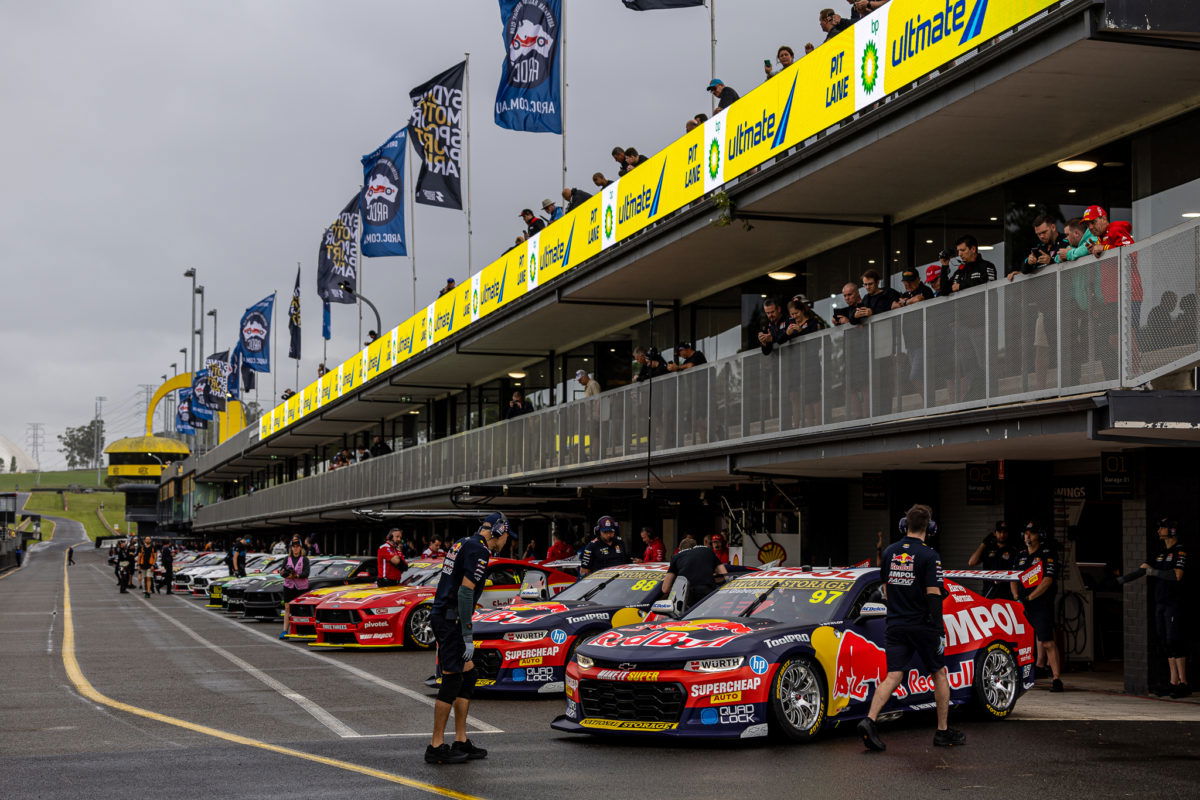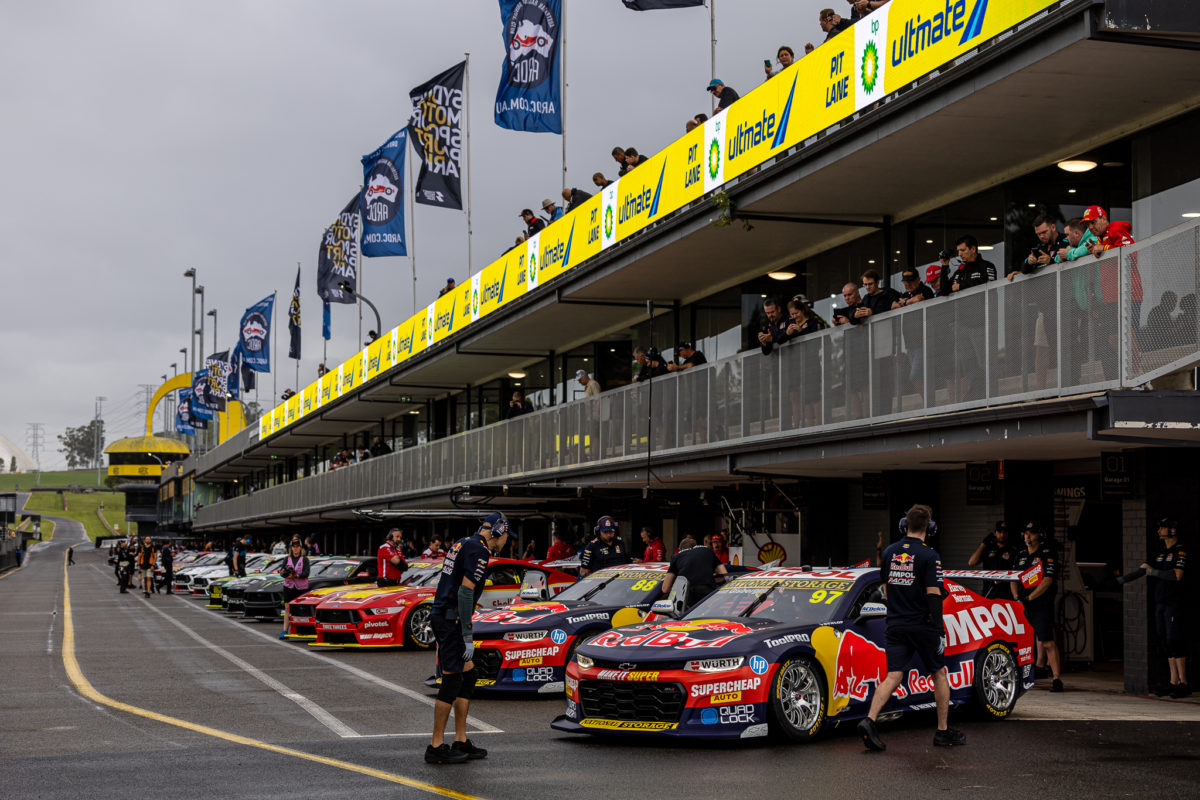

It’s finally here – the racing debut of the Gen3 Supercar is upon us, so what better time is there to consider what the variables are that will make the Newcastle 500 a very unpredictable event?
Well, there’s a host of them! So, in no particular order:
- Driver adaptation – the drivers have had three days to get used to these very different cars. That’s not long. I’ve heard both the public and private comments of some of the drivers, and a number of the top ones are being pretty circumspect about the Gen3 cars.
That’s not because they don’t like them or don’t want to race them – it’s because they haven’t got fully used to them and are unsure of the full range of characteristics of the cars through a range of set-ups.
Full tanks, empty tanks, Soft tyres, Super Soft tyres, Hard tyres, qualifying set-ups, race set-ups – you name it, no-one has a real handle on all the varying aspects of car performance.
Moreover, drivers are still playing with ergonomics, seating positions and visibility. Some drivers and teams will adapt faster than others. Other will take longer to adapt but will ultimately achieve more.
It’s going to fascinating to watch and what happens in Newcastle may well be of little relevance to the Season as a whole.
- Reliability – over the years the average Supercar has become super reliable, coping admirably with varying track and weather conditions around the country. That’s what happens when regulations stay the same for a period of time.
But just as there were issues in 2013 when the Car of the Future debuted, there’s plenty of scope for issues with the Gen3 cars.
Team testing has gone remarkably well. But this phase of testing has been confined to three permanent racetracks, and no-one has attempted anything like 250km in one run … let alone on a street track.
Newcastle is bumpy and tight. Very different to the average race circuit. And that leads neatly to…
- Heat, and the effect on the cars – the weather forecast is predicting temperatures in the mid to high 20s for the weekend. That’s lucky as the start of the week was hotter.
But high 20s at a street track can feel like mid 30s at an open, permanent, circuit like Phillip Island or The Bend for instance. That’s because the concrete walls retain the heat created by 25, 600+ hp race cars at full noise. This heat doesn’t dissipate quickly.
Lower ambient temperatures help reduce the effect of this heat on the cars but they don’t remove it and a sunny day will give higher track temperatures regardless. Components will be running hotter than in testing.
These aluminium block engines will reject more heat under the bonnets than the old iron block units. How high will oil temperatures go? And what will happen to gearbox temperatures, fuel temperatures, etc as that residual heat flows under the cars as a whole? It’s possible that under high bonnet temperatures will cause some components to fail.
Time will tell but there could be some interesting improvisation happening over the weekend. Which brings me to……
- Heat, and the effect on the drivers – this could be a major issue given the characteristics of those aluminium engines combined with a surprisingly uninsulated exhaust system. Penny pinching has also seen the use of a pretty cheap form of bulkhead insulation on all cars and this will exacerbate any issues.
Overheating drivers could provide the biggest variable of the weekend – and not in a good way. Moreover, anyone who thinks that they will be able to alleviate a driver overheating issue by ripping out the driver’s door window at a pit stop will have to think again. The use of triangular Racing Nets on all Gen3 cars means that a fixed driver’s door window HAS to be run at all times.
If the ambient temperatures are indeed low enough to reduce this as an issue in Newcastle, it will still be a major one come Darwin/Gold Coast/Adelaide. So it needs to be sorted.
Immense, and sometimes permanent, damage can be inflicted on overheating drivers and we’ve seen enough of that over the years here in Australia in both Supercars and GTs to know better than not to listen to the thoughts of the drivers over the last few weeks.
Looking after driver welfare has been a cornerstone of the success of the best racing teams for decades. It shouldn’t be left to chance.
- Vision – the cars look awesome with their new clothes being fully representative of the Mustang and the Camaro road cars. But there’s no doubt that the driver vision out of the Gen3 cars is not as optimal as the last generation Supercar.
That’s just a reflection of the way American Pony cars are. Many GT3 cars are similar. Drivers will still be trying to get used to where the extremities of the cars are and how best to keep an eye on fellow competitors.
Supercars and Motorsport Australia also need to listen carefully to any requests to change the positioning of lights and/or flag points not just at Newcastle but throughout the year if this is an issue. With Racing Nets, Head Restraint Devices, seat wings and inboard driving positions all becoming a part of a safer racing car over the last few years, it’s important that those officiating over proceedings realise that visibility is not what it was 20 years ago and never will be.
- Width – the Gen3 car are approx 100mm wider than the old cars. That means that two cars racing side by side will occupy more real estate than previously and that will take some getting used to by many of the drivers, especially those that don’t drive GT cars (which are of a similar width).
Newcastle could cause bigger problems than most venues given the narrow nature of the circuit. In 2017 I advocated a staggered grid at this venue (like the Gold Coast) in order to preserve the cars as much as possible through the first lap.
That idea didn’t get up, but I’d be adopting it today for this weekend given the size of the cars and the unfamiliarity of the drivers with the clutches and the engine characteristics. More space/time could be vital in avoiding a start line shunt. But also, it’s going to be asking a lot of these cars to go through Turn 1 safely side by side first time out. Like the driver cooling issue, this is risk management.
I hope I’m concerned unnecessarily, but if I’m not then there are going to be some big bills and it could also highlight a shortage of spare parts for some teams. Even driving around the Newcastle track individually, these cars will take some getting used to by the drivers given that extra width and thus the increased proximity to the concrete walls.
- Pit stops – new (hopefully much safer) fuel hose connectors will take some getting used to along with new wheels, wheel nuts and sockets. Given that the races are refuelling races this weekend, the pressure should be off the wheel changers so that’s a good thing for the first event.
But car visibility in pit lane could come into the equation as drivers attempt to filter back into the fast lane. Furthermore, whilst the pit lane is fairly wide, it’s pretty compact in length so these physically bulkier cars will be very close to each other in the case of stacking under Safety Car. Don’t expect that to go very smoothly first time out if it happens.
- Fuel economy – I reckon that no-one, including Supercars, really has a handle on whether there’s a difference between the two engines. Rumour has it that the Ford is better, but that’s all it is.
- Spares – as I mentioned earlier, spare parts are going to be at a premium for most, if not all, teams this weekend. Clearly, repairing any accident damage is going to be a learning experience for everyone, as it indeed was a decade ago with the Car of the Future. That will be made that much more difficult if teams are short of parts. But that’s where I suspect the teams will work well together to assist each other at this point in the season. There’s clearly more scope than normal though for some non-starters through the course of the weekend. Ultimately this should just be a short term issue but it is a big downside to starting the season at one of the potentially most destructive circuits in the country.
But let’s hope that the positives far outweigh the potential negatives through the course of the coming weekend. The cars look and sound awesome. If the teams and Supercars look after the welfare of the drivers properly then we should see some great racing. And it’ll only get better through the course of the season!




















Discussion about this post